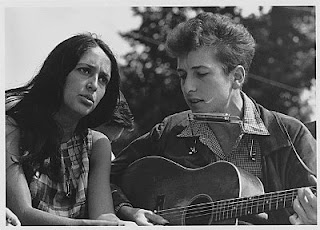
For many individuals, the 1960’s were known as beautiful times, whether it was lived or learned about. It was a salient moment of creative and artistic outburst which filled the air with social and political expressions. The spirit of the 1960’s followed after the repressed and conservative era of the 1950’s. New and existing genres began to take shape with a whole new meaning. The emergence of the folk revival of the late 1950’s and early 1960’s and soon after rock music became revolutionary anthems of the generation in the U.S. Music was very inspirational and musicians became the voice of the people. Spokes musicians such as Joan Baez and Bob Dylan took after the roots of folk music that originated in the 1930s during the Great Depression with notable musician/activists like Woody Guthrie and later Pete Seeger. Although this musical culture had its boom in the 1960s and carried on highly political and artistic elements, it inevitably found itself in opposition to the mainstream social political thinking and social norms. The radical actions and movements inspired from this generation were a critical platform for current theoretical discourses surrounding the understanding of society through its cultural production and media representation. The folk revival not only in the U.S., but in other countries in Latin America, became global a phenomenon inspiring new strategies for ‘listening.’ Folk music raised sociopolitical consciousness of certain issues troubling the people. It purposely strove away from making profit and mass commercialization. This era confirmed that music can scratch political system, that it has the potential to challenge it and inspire the masses, and change the way we perceive it.
Since the interlocking of technology, media, and music, music has gone through major transformations. The governments’ hold on media gave it new powers for control, and creating consumerism. Lets explore moments in history in were music, noise, and sounds has modalities of control, commodification, and social bonding through the mediascape and technology.